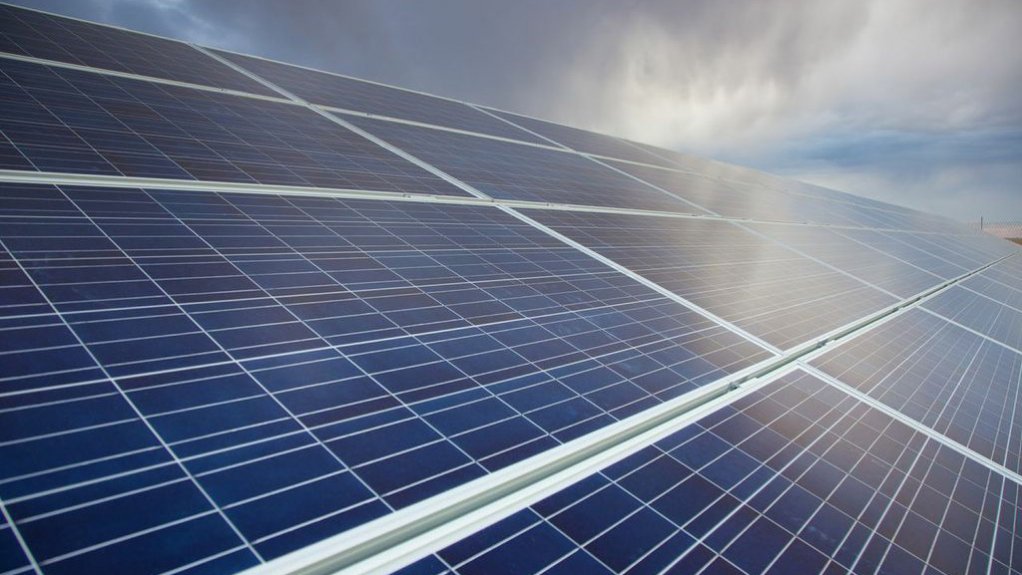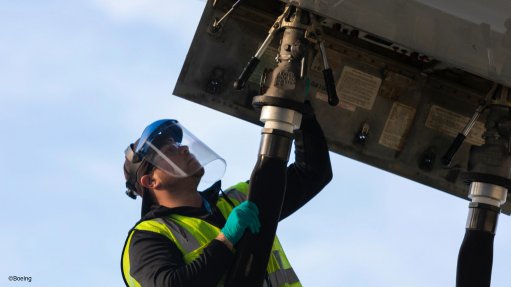IEA makes case for $3-trillion global clean-energy stimulus plan
The International Energy Agency (IEA) released a ‘Sustainable Recovery Plan’ on June 18 that outlines the case for a $3-trillion global clean-energy stimulus plan over the coming three years to help repair the economic and employment damage caused by the Covid-19 pandemic.
Produced in collaboration with the International Monetary Fund, the report argues that investing in shovel-ready solutions at a rate of $1-trillion a year from 2021 to 2023 could help lift global gross domestic product by 3.5% in 2023 above levels that would prevail absent the stimulus.
In addition, nine-million energy related jobs would be saved or created, while yearly energy-related greenhouse gas emissions could be reduced by 4.5-billion tons by the end of the period.
The Sustainable Recovery Plan is designed, the IEA states, to avoid the kind of sharp rebound in carbon emissions that accompanied the recovery from the 2008/9 global economic crisis and ensure that 2019 is the “definitive peak” in global emissions.
Based on detailed assessments of more than 30 specific energy policy measures, the plan spans the six key energy subsectors of electricity, transport, industry, buildings, fuels and emerging low-carbon technologies.
It is premised on the mobilisation of both public and private resources to accelerate the pace of renewable-energy deployments, strengthen electricity grids, expand the use of clean fuels and green transport, boost energy efficiency, modernise existing nuclear and hydropower plants and support energy technology innovation.
The plan also seeks to integrate the energy transition with the recovery initiatives beginning to emerge globally, with about $9-trillion in support measures already announced, but focusing primarily on emergency financial and economic relief to prevent an even deeper crisis.
“With more stimulus coming, attention is now turning to longer-term recovery plans that seek to repair the economic damage from the disruptions caused by confinement measures and restrictions on mobility. Some plans already include energy, and its role could grow in successive rounds of stimulus spending,” IEA executive director Dr Fatih Birol notes.
“Governments have a once-in-a-lifetime opportunity to reboot their economies and bring a wave of new employment opportunities while accelerating the shift to a more resilient and cleaner energy future.”
BIG RENEWABLES ACCELERATION
The plan proposes that 130 GW of wind and solar photovoltaic (PV) generation be installed from 2021 to 2023 in addition that which would have been installed in the absence of the recovery plan. This additional capacity would generate nearly 320 terawatt-hours of electricity on average each year.
In 2019, 176 GW of new renewable power generation was added globally.
These deployments would be underpinned by yearly investments of $110-billion in grid extensions and improvements, increasing the total spending on grids globally by around 40% from levels seen in recent years.
The plan also envisages life extensions for some 90 GW of hydro and nuclear power capacity that would otherwise have been retired.
Around $180-billion would be spent each year globally on new wind and solar PV projects. As well as projects to repower existing sites.
The focus on electricity investments during the period would help structurally reorient countries’ energy sectors, accelerating the shift towards electricity in other areas, such as mobility and heating, so as to support further decarbonisation in those sectors.
The report calculates that global electricity demand will rise in the three-year period but that the increase would be around 900 TWh lower than would otherwise have been the case, owing to simultaneous investments in energy efficiency.
DEEP RETROFITS
The plan envisages “deep retrofits” of a large number of existing buildings and the development of a number of new highly efficient buildings. In total, the efficiency of around 20-million dwellings would be drastically improved each year as a result of the recovery plan.
It also proposes incentives to stimulate the purchase of more than 350-million high efficiency appliances each year, as well as a variety of efficiency improvements in industrial processes to curb electricity use.
The plan envisages oil consumption in transport to be around two-million barrels a day less, supported by the yearly purchase, between 2021 and 2023, of 12-million cars with more efficient internal combustion engines, including hybrids, alongside eight-million electric vehicles.
Oil demand in transport would also be reduced from a shift in some light commercial vehicles sales to electric models and from improvements in the efficiency of trucks, airplanes and ships.
JOBS IMPACT
The employment impact of the plan is also significant, in a context where some 300-million jobs, including three-million of the 40-million energy jobs worldwide, having been placed at risk by the pandemic.
The report estimates that some nine-million jobs will be created or saved should the plan be implemented, with the largest portion of new jobs created through retrofitting buildings to improve energy efficiency and in the electricity sector, particularly in grids and renewables.
The other areas that would see higher employment include energy efficiency in industries such as manufacturing, food and textiles, low-carbon transport infrastructure and more efficient and new energy vehicles.
The plan requires policymakers to deliver shovel-ready clean-energy projects, including restarting those projects delayed by the pandemic.
It also urges governments to mobilise private finance, develop strong new project pipelines and link support packages already approved for industries in distress to energy sustainability and resilience.
The IEA argues further that there would be significant coordination gains if countries align their actions or pursue crossborder collaboration.
Comments
Announcements
What's On
Subscribe to improve your user experience...
Option 1 (equivalent of R125 a month):
Receive a weekly copy of Creamer Media's Engineering News & Mining Weekly magazine
(print copy for those in South Africa and e-magazine for those outside of South Africa)
Receive daily email newsletters
Access to full search results
Access archive of magazine back copies
Access to Projects in Progress
Access to ONE Research Report of your choice in PDF format
Option 2 (equivalent of R375 a month):
All benefits from Option 1
PLUS
Access to Creamer Media's Research Channel Africa for ALL Research Reports, in PDF format, on various industrial and mining sectors
including Electricity; Water; Energy Transition; Hydrogen; Roads, Rail and Ports; Coal; Gold; Platinum; Battery Metals; etc.
Already a subscriber?
Forgotten your password?
Receive weekly copy of Creamer Media's Engineering News & Mining Weekly magazine (print copy for those in South Africa and e-magazine for those outside of South Africa)
➕
Recieve daily email newsletters
➕
Access to full search results
➕
Access archive of magazine back copies
➕
Access to Projects in Progress
➕
Access to ONE Research Report of your choice in PDF format
RESEARCH CHANNEL AFRICA
R4500 (equivalent of R375 a month)
SUBSCRIBEAll benefits from Option 1
➕
Access to Creamer Media's Research Channel Africa for ALL Research Reports on various industrial and mining sectors, in PDF format, including on:
Electricity
➕
Water
➕
Energy Transition
➕
Hydrogen
➕
Roads, Rail and Ports
➕
Coal
➕
Gold
➕
Platinum
➕
Battery Metals
➕
etc.
Receive all benefits from Option 1 or Option 2 delivered to numerous people at your company
➕
Multiple User names and Passwords for simultaneous log-ins
➕
Intranet integration access to all in your organisation





















